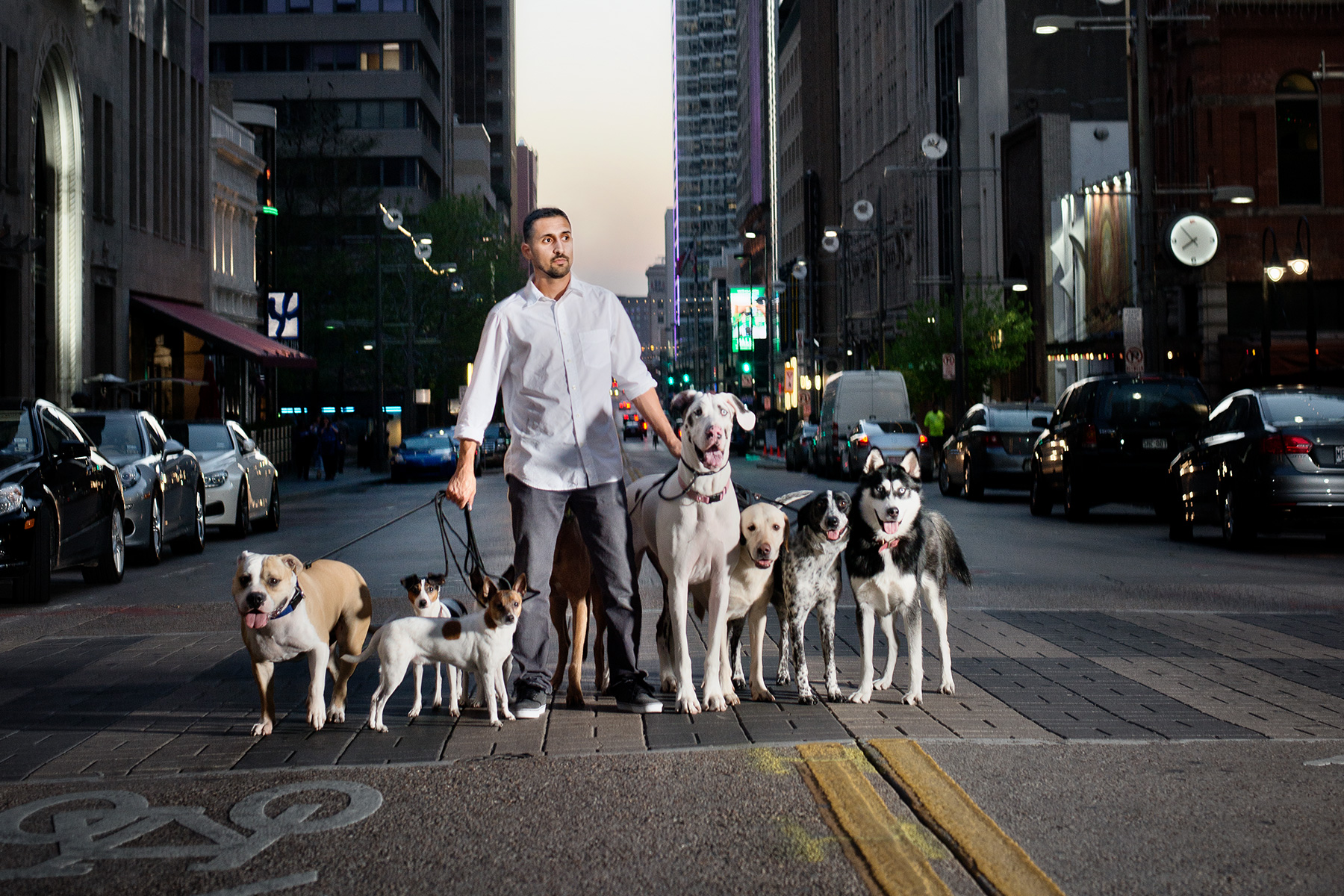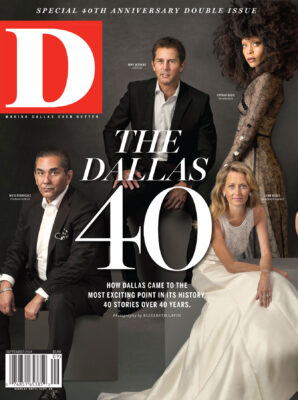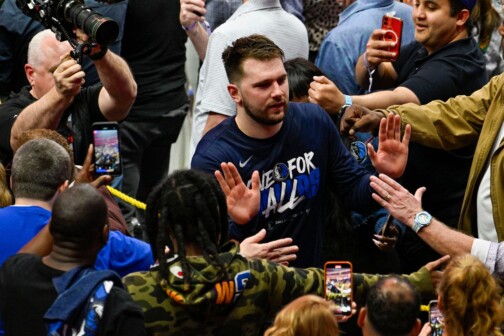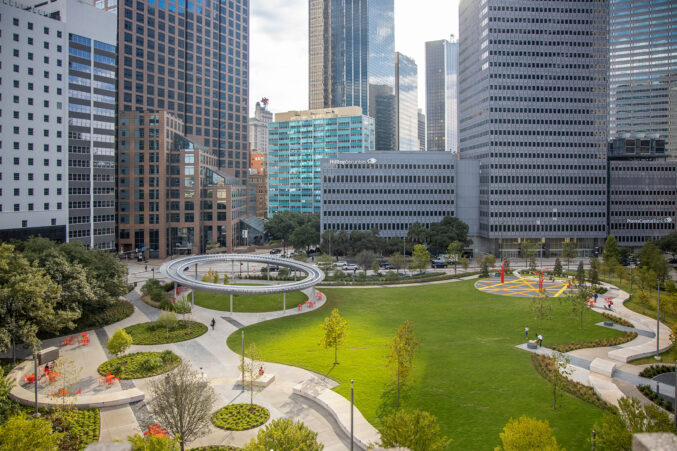For Art Ortiz, 2011 was one of those years, the kind in which a carefully built life implodes in a few short months. He lost his job, missed a shot at his dream career, and his wife left him. Two things remained: a neighborhood he loved and his dogs.
“I didn’t know what to do,” he says. “I was walking downtown with my three little dogs. People would ask me if I was a dog walker. I would actually get insulted.”
But he had extra time and needed the money, so he began walking his friends’ dogs and quickly noticed he had a knack for it. The dogs responded to his calm and reassuring demeanor. In 2012, Ortiz launched DogFit Dallas, which now has 67 clients, two employees, and a waiting list. Nearly 90 percent of his business is focused on Main Street in downtown Dallas. “I help dogs with people problems,” Ortiz, who is from Del Rio, jokes.
Just 25 years ago, when Dallas’ downtown had a population of 200 people, Ortiz would not have been able to make a living this way. A few vacant department stores and office buildings had been renovated into residential properties. But it wasn’t until 2005, when Forest City brokered a deal with the city to use more than $60 million to revamp Mercantile Place, that downtown’s residential population really started to grow. Its surroundings grew with it—adding green spaces (Main Street Garden, Belo Garden, and Klyde Warren Park), the Arts District, a luxury retailer (Traffic Los Angeles), and top restaurants (Dallas Chop House, CBD Provisions, Stephan Pyles). Neiman Marcus’ flagship store remained as an anchor. The current population stands at 8,000. In five years, Downtown Dallas Inc. estimates, that number will jump to 13,000. For people like 38-year-old Ortiz, this means business will only get better.
“I really do love being in the city, so I really wanted to make it work, no matter what it took,” Ortiz says. “Even if I couldn’t afford shoes or I had to miss a meal, I wanted to be here. I wanted to be a part of this growth.”







